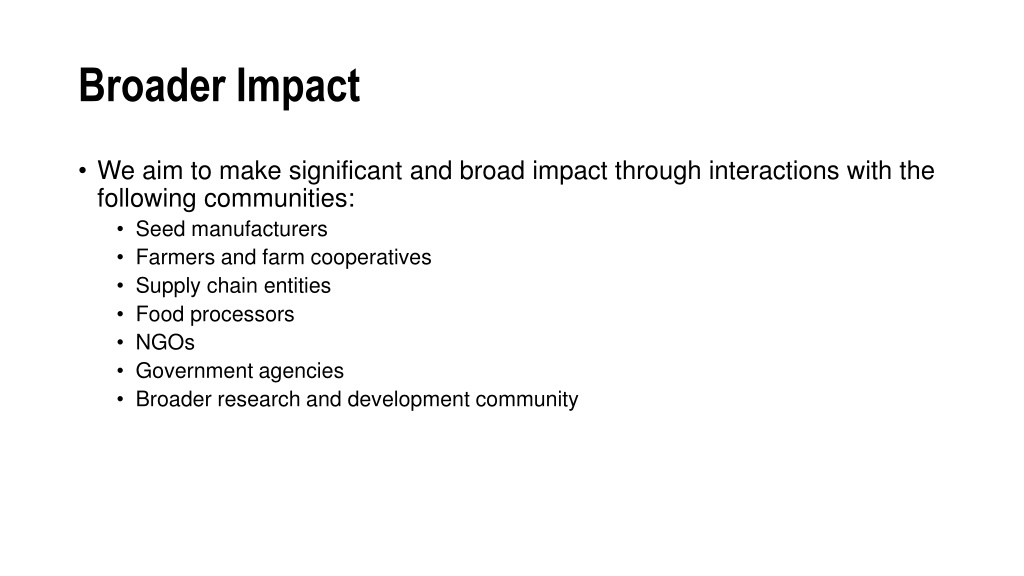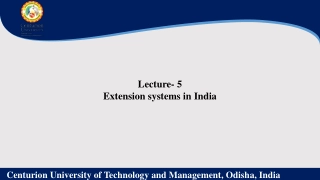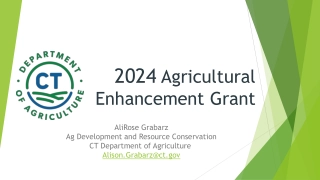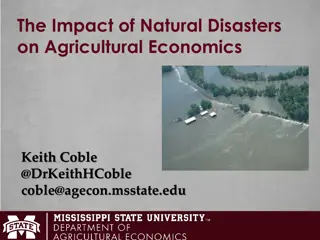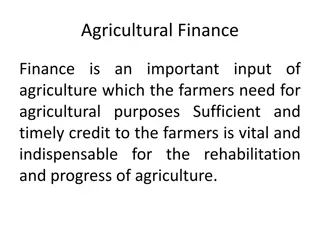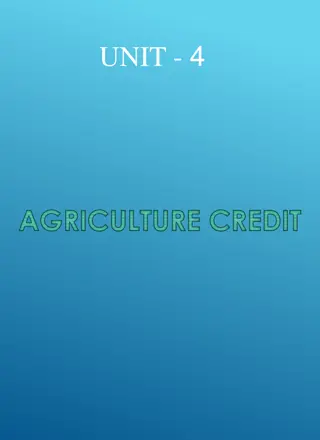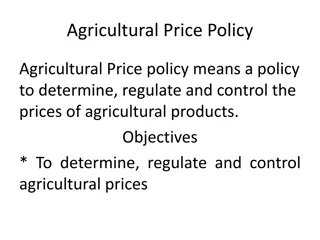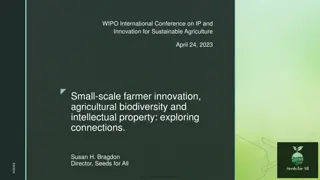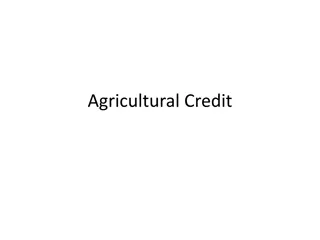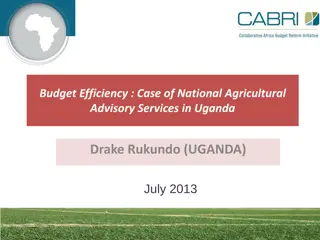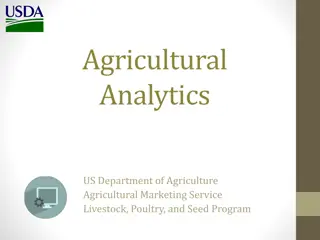Enhancing Agricultural Impact Through Collaborative Interactions
Fostering significant impact by engaging with diverse communities including seed manufacturers, farmers, supply chain entities, and more. Collaborative efforts range from developing barcoding techniques for seed traceability to collecting data on farming practices and leveraging industry partnerships for supply chain optimization. Purdue Agriculture Extension plays a vital role in disseminating research-based artifacts to stakeholders for building sustainable businesses and vibrant communities.
Download Presentation

Please find below an Image/Link to download the presentation.
The content on the website is provided AS IS for your information and personal use only. It may not be sold, licensed, or shared on other websites without obtaining consent from the author. Download presentation by click this link. If you encounter any issues during the download, it is possible that the publisher has removed the file from their server.
E N D
Presentation Transcript
Broader Impact We aim to make significant and broad impact through interactions with the following communities: Seed manufacturers Farmers and farm cooperatives Supply chain entities Food processors NGOs Government agencies Broader research and development community
Broader Impact: Seed Manufacturers Who: Our initial collaboration is with Bayer/Monsanto (please see letter of collaboration in proposal). We will grow this to Dow Agro at Purdue Research Park, and subsequently to other companies. What: We will develop barcoding techniques and demonstrate then on genomes of specific interest to these companies. We will demonstrate traceback by shallow sequencing of seed genomes. How: We will transition methods and software techniques for barcode generation and detection. These collaborators will engineer the barcodes and test the seeds.
Broader Impact: Farmers and Farm Cooperatives Who: We will work with local farmers (deep interactions in the ten-county region through WHIN, and farmers and farm cooperatives statewide). What: We will collect data from these stakeholders on field management, phenotype, processing practices, yield, marketing, smart technology use, and traceback. How: We will engage with the stakeholders through Purdue Agriculture Extension (described at the end of this slide-deck).
Broader Impact: Supply Chain Entities and Processors Who: Working with the OATS/Trellis project, we will leverage industry partners -- Produce Marketing Association, Sysco, Domex Superfresh Growers, Centricity Global, and Taylor Farms. What: We will get a range of production, supply chain, and processing data, including constraints on data (missing data), and objective functions. How: We will use this data to build realistic supply chain models, use these models to define optimization problems, derive bounds and achievable solutions under partial/ asymmetric information environments.
Broader Impact: Purdue Agriculture Extension Cooperative Agriculture Extension is a nationwide education system that operates through land-grant universities in partnership with federal, state, and local governments Purdue Agriculture Extension takes science based artifacts (software, data) obtained through research, and disseminates them to our Stakeholders Purdue Agriculture Extension s relevance is measured by its ability to offer educational programs and services that build vibrant communities, strong families, and sustainable businesses on both Main Street and the farm gate
Indiana Stakeholders Our Stakeholders are the farmers, entrepreneurs, and workers in the food and agricultural industry, the communities they work in, and the families they support Indiana has ~2,300 fruit and vegetable growers that range from the very small to the very large. Many of them depend on Purdue Extension for knowledge regarding pest and disease management, crop production, varieties to plant, and good agricultural practices to ensure safe fruit and vegetables, harvesting and post-harvest business decisions This cohort provides an outstanding outreach testbed for our research we aim to validate our techniques through this program, and subsequently to scale to nationwide and international scope.
Indiana Stakeholders Purdue extension will conduct surveys to obtain the following data: Current practices for traceability Sales practices and volume of fresh produce Need for third-party audits Availability of smart tools and techniques in agriculture and processing Are they covered by the Produce Safety Rule of FSMA Participation in Good Agricultural Practices training Prevalence of food safety best practices in farm operation Their need for smart tools, acceptance of sensing infrastructure, and use of software tools in planning and execution
Agriculture Extension and Validation Experiments Ag. Extension has many growers in Indiana, both large and small, that would be willing to allow validation experiments to be done on their farm The Purdue Student Farm, that sells ~$40,000 of fresh fruits and vegetables to Purdue Dining each year would serve as a platform for validation experiments We have eight Purdue Agricultural Centers (PACs) throughout Indiana. The Southwest Purdue Agricultural Center in Vincennes, IN producing a large amount of fruits and vegetables each year and would provide a testbed for phenotyping experiments
Influence Policy and Educating Policy Makers Purdue Extension has close relationships with the Indiana State Department of Health (regulates fresh produce in Indiana), the Indiana State Department of Agriculture (promotes agriculture in Indiana), and the Food and Drug Administration (federal regulation of fresh produce). These agencies look to Purdue as a primary source of scientifically validated information and rely on us to support their policy making decisions. The proposed Center will use Purdue Extension for connections to policy makers.
Data Available from Purdue Extension Stakeholders Types of commodities grown Current traceability systems used for recalls Number of recalls Where products are typically produced and sold Details of worker training programs Any inspections that have been done and the results of the inspection Extent to which computing/ sensing technologies are used in the business/ farm
